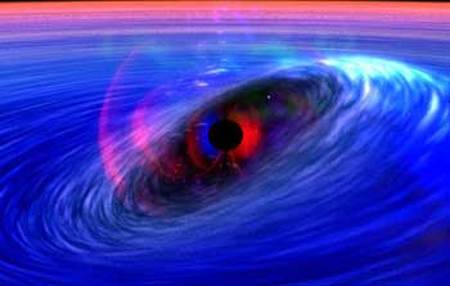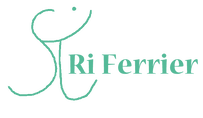“Trauma results in a fundamental reorganization of the way mind and brain manage perceptions. It changes not only how we think and what we think about, but also our very capacity to think.” The human brain is a social organ that is shaped by experience; it's a profoundly relational part of our body, especially in the formative years. So childhood trauma literally shapes your brain for the rest of your life...
Childhood abuse has been shown to specifically effect i) Ventral pre frontal cortex - the part of the brain that allows you to observe yourself, where you know what's going on inside of you. In effect, it is our watchtower. ii) Orbitel pre frontal cortex - the part of your brain that helps you not to become impulsive. iii) Amygdala- the smoke detector of the brain that tells you what is dangerous and what is safe. It knows nothing about reasoning or cognitive functions. It deals with feelings and emotions. iv) Dorsolateral cortex – the part of the brain that gives you the capacity to see yourself over time, combining past with the future. v) Precuneus - the part of your brain that worries about yourself. vi) Anterior cingulate - the part of the brain that filters out irrelevant information. In a healthy developmental environment, your brain gets to feel a sense of pleasure, engagement, and exploration. Your brain opens up to learn, to see things, to accumulate information, to form friendships. If as a child you are frightened and unwanted, your brain specialises in managing feelings of fear and abandonment. Trauma is thus a kinesthetic experience; it is not just an event that took place sometime in the past; it is also the imprint left by that experience on mind, brain, and body. It as an illness of not being alive in the present as this imprint has ongoing consequences for how we manage to survive in the present. Trauma creates chaos in our brain. Once traumatised a person perceives the world differently so the question to therapists is how do we assist our clients to heal their nervous systems so that their perception of danger or safety is more accurate? It is very interesting that mindfulness increases activation of the medial prefrontal cortex and decreases activation of structures like the amygdala that trigger our emotional responses. This increases our control over the emotional brain and is one way we can start to utilise the neuro-plasticity of our brains for our benefit. There is still much being learnt in this area, but to me anything that makes a person feel safer in the present moment (breath, body work, nature, stillness) will go a long way towards helping to antidote the physiological impacts of childhood trauma on our brains. We can rewire, it is just going to take time, patience and space...  Consciousness is at once familiar to us all, and deeply mysterious. It is defined as ‘the state of being aware of and responsive to one's surroundings’ and ‘a person's awareness or perception of something’. There are many unanswered questions around consciousness yet there is still currently an accepted belief that babies grow into consciousness towards the end of their first year. What if we are so wrong with this belief? How well do we really understand the early experience of life from a baby’s point of view? At a recent seminar Dr Wendy Anne McCarty talked about how babies have dual perspectives of awareness: transcendent and human. By transcendent, she was referring to the non local time, the awareness of self that functions outside of time and space. New clinical research findings from Prenatal and Perinatal Psychology (PPN) reveal that our earliest experiences in the womb can profoundly shape and set in motion physical, mental, emotional and relational life patterns that can be positive or negative. Indeed the research shows that we are conscious and aware from the very beginning of life... Yet we do not often meet babies at that level (either as parents or therapists) - the transcendent self of the baby is disregarded and not seen. As a result we miss the chance of intentional and meaningful telepathy, for a multi-dimensional relationship – an intimate dance with each other. Babies are so eager for us to develop our understanding of who they are. From the very beginning, they are seeking validation, heartfelt connection, love, safety (babies have an innate need for safety) and social engagement. They need to be heard on every level and to be listened to for then their life experience is affirmed. So what can we do as parents and therapists to better understand the early experience of life from a baby’s perspective? How do we step into this expanded lens when we may not even hold that lens ourselves yet? This is the key question that has me pondering since Dr McCarty’s seminar and its answer feels rich and varied –here are some of the threads that resonate with me so far: The more able we are to tune into our own internal states and respond accordingly, the more able we will be able to tune into the baby’s internal states and respond accordingly. When life is so busy, this is not an easy task – so mindfulness, breath, taking time to be in nature, all are ways to be more attentive to what our internal landscape is currently showing. And this will be resonant with the transcendent self of the baby. Self-regulation (calming ourselves down from the emotional highwire) is our safety net – and is one we need to learn to offer the newborn infant, helping her to learn how to handle ever-increasing intensity of stimulation and building resilience/emotional tolerance. Giving space for the baby to calm down, allowing the pauses between stimulation for her system to reset – all of these add up to the safety net we can offer: a much needed thing in this world. Finally, it feels important to let the baby take the lead so we follow their own spontaneous expression of self. I love the idea of a ‘love loop’, where the loving gaze of parent to child is reciprocated by the baby with a loving gaze back to the parents, causing their endorphin levels to rise, thus completing a closed emotional circuit. This is truly a dynamic, interactive system. I believe that every child should be held in sacred trust, and I feel that the more we attune ourselves to the human and transcendental planes, the more we are able to offer ourselves and the next generations.  I love the way that our work deepens and expands with experience.... I’ve found myself over the last few months holding the awareness of a client’s “optimal template of health and wellbeing” whilst in a craniosacral session. I feel that there is a great template that holds all the potency and potential of the client; then life happens and their system gets shunted onto a different template, a false template that is out of kilter with our essence and causes dis-ease. Our job as therapists is to allow enough freedom and space for the original template (blueprint) to be re-membered, in body, in mind and in spirit. It is also often our job to free up some resources for the journey back... Katherine Ukleja & Cherionna Menzam-Sills had a much more eloquent way of addressing this at the recent Breath of Life conference: the forces that guide our formation as embryos are still available to us in our work. They used the phrase ‘our embryonic being’ which really resonated with me personally. It makes me think of the therapeutic power of a seed kernel; all the nutrients needed for growth stored there, a storehouse of vigour and vitality. As the old adage goes “from little acorns do mighty oaks grow.” I believe that we all have the ability to come back to this force of life, no matter what we have been through. I believe this with every cell of my body. I find it very comforting to know that nothing is ever lost: the blueprint is still there for us to access. Life forever throws curve balls, we get hurt, fall flat on our faces, react from wounded places, get ill, depressed, despondent, face traumatic events, lose our centre... the list is endless. Yet, somewhere underneath all of this... is our embryonic being template where time and events have not had an impact, where there is complete wholeness, potential and potency. So how can we shift from our current template back to this place? Sometimes all that is needed is for someone to hold the bridge for you to return; sometimes we need to discharge stuck energy from our body that holds us in the current template – I get the image of fluidity coming into our energetic and body structures, allowing movement, surrender and flow. And with restrictions released, that river of life would automatically be drawn to the Source, that deep well within us that holds our most optimum template of health and wellbeing. May we hold that image in our Hearts as we travel the difficult times. May we find the transformation that our bodies yearn for and may we remember, remember, remember.  I find in man a miniature universe - AT Still I find in man a miniature universe - AT Still As Andrew Taylor Still said: "Anyone can find disease- to find health should be the object of the doctor". This was a plea to move beyond the analytic and embrace the holistic paradigm. But why? Well, the more we resonate with the part, the less aware we are of the whole and vice versa. So if we concentrate on the injured or diseased part in a patient, we lose its relationship to the bigger picture. And if we just look at the bigger picture, we are not aware of the injured part. So the challenge to us as practitioners is how do we hold the part and the whole at the same time? How can we find the health rather than merely attempting to confront dis-ease? Yet the holographic principle states that to access the part is to access the whole...hmm an interesting conundrum indeed! So maybe the first challenge to us as practitioners is how do we enter the relational space to become holistic? Maintaining awareness of the three tides at the same time (the ripples on the surface, the deeper water and the ocean floor is a great analogy) would be a good starting point. And the second challenge then becomes - how do we come into contact (touch)? Touch is incredibly powerful – it is our bio-electric searching tool, more powerful than any machine! Touch carries charge even if it’s just projected touch (say touching the cranium and intending touch to the sacrum). Touch is fundamental to the human experience. It is the first of the senses to develop in the human infant, and it remains perhaps the most emotionally central throughout our lives. Research has shown that less than one second of safe, interpersonal touch, such as a hand to the back or the shoulder can influence health and behaviour in remarkable ways. The questions we ask the body through touch are like sonar, we are listening to an incredible amount of information, as we become the fulcrum for our clients. And this fulcrum is loaded with intelligence. In fact the complex matrix of health is profound and unfathomable. It is the quest for health that keeps us alive and steeped in mystery...... This blog is inspired by a lecture by Robert Lever at the Breath of Life Conference 2017, author of 'Finding the Health'. |
|
May you walk in Beauty
|
Copyright of Ri Ferrier 2024
|
